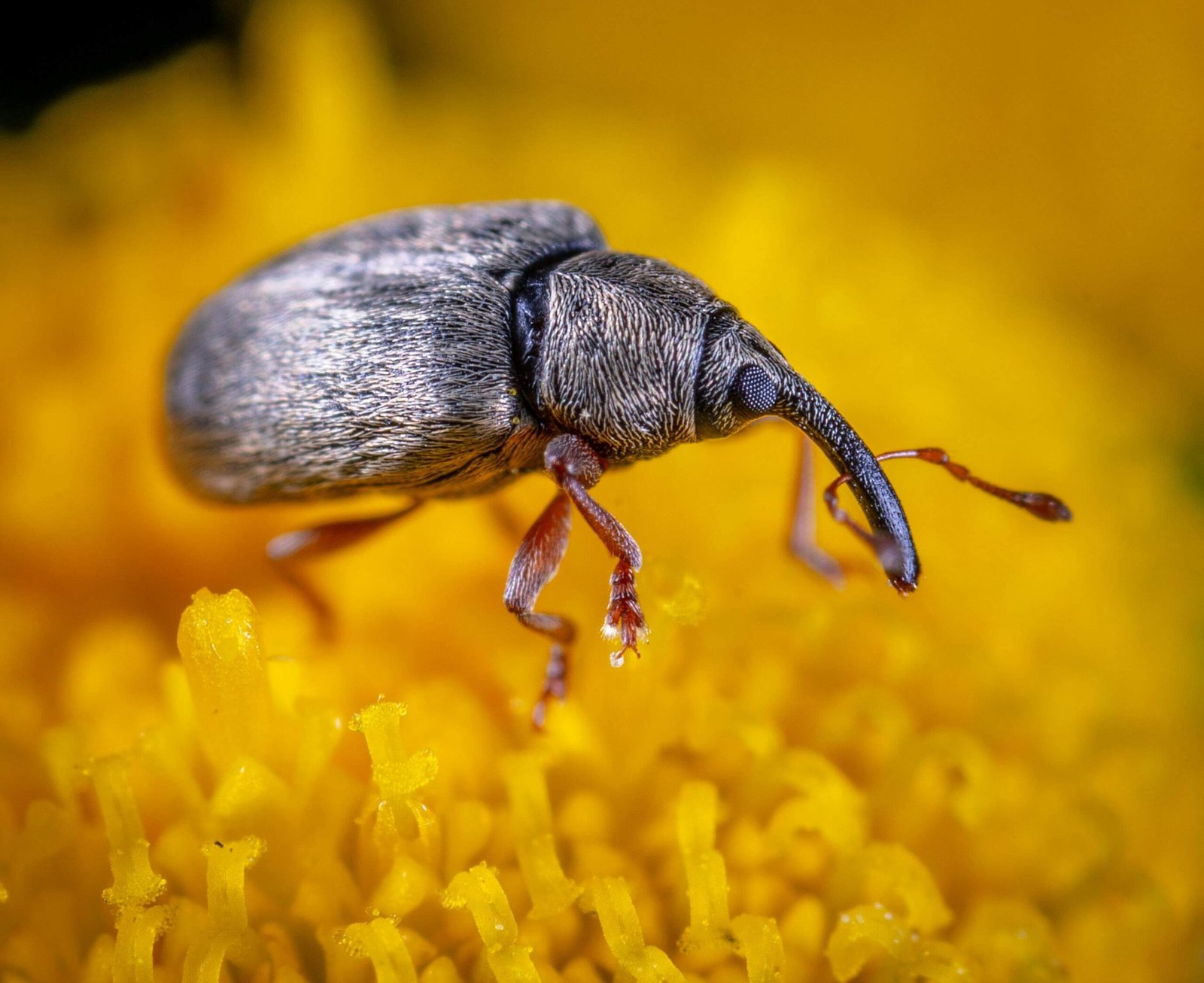
Granary Weevil: An In-Depth Look at a Common Agricultural Pest
Introduction
The granary weevil (Sitophilus granarius) is a small but formidable pest that poses a significant threat to stored grains. Originating from Europe, this insect has spread globally and is now commonly found in grain storage facilities, farms, and homes where grains are stored. This article explores the biology, life cycle, habits, and effective management strategies for granary weevils to help protect your grain stores from infestation.
Description and Identification
Granary weevils are small beetles, typically measuring about 3 to 5 mm in length. Their bodies are cylindrical, with a dark brown to black coloration. A distinctive feature of these pests is their elongated snouts, which they use to bore into grains to lay eggs. Adult granary weevils can be recognized by their:
- Color: Dark brown or black, often with a shiny appearance.
- Shape: Elongated and cylindrical body with a distinct snout.
- Size: 3-5 mm in length, making them relatively small compared to other beetles.
Life Cycle
Granary weevils undergo a complete metamorphosis, consisting of four stages: egg, larva, pupa, and adult.
- Egg: Female granary weevils lay their eggs inside whole grains, usually in the kernels of wheat, barley, and oats. Each female can lay up to 400 eggs throughout her lifespan.
- Larva: Once the eggs hatch, larvae emerge and begin feeding on the grain from the inside. They create tunnels within the grain, which can lead to structural damage and loss of grain quality.
- Pupa: After feeding, larvae pupate within the grain, where they undergo metamorphosis into adult beetles. This stage can last several weeks, depending on environmental conditions.
- Adult: Adult granary weevils emerge from the grain and continue the cycle by seeking out new grains for laying eggs.
Habits and Behavior
Granary weevils are primarily nocturnal, making them difficult to spot during the day. They prefer dark, humid environments where grains are stored. These pests are particularly attracted to damaged or overripe grains, which provide ideal conditions for egg-laying and larval development.
Feeding Habits: Granary weevils feed on the starches within grains, leading to significant damage and loss of quality. Infested grains often exhibit signs of feeding, including small holes on the surface, which indicate where the adult beetles have emerged.
Economic Impact
The presence of granary weevils can lead to substantial economic losses for grain producers and storage facilities. Infestations can result in:
- Reduced Grain Quality: Infested grains may become discolored, have a musty odor, and lose nutritional value.
- Increased Storage Costs: Contamination requires thorough cleaning and may lead to costly fumigation or pest control measures.
- Marketability Issues: Infested grain may not meet quality standards, leading to rejected shipments and financial losses.
Management Strategies
Effective management of granary weevils requires a combination of prevention, monitoring, and control measures:
1. Prevention
- Proper Storage: Store grains in airtight containers to reduce the likelihood of infestation. Use cool, dry conditions to deter weevil activity.
- Regular Inspections: Frequently check grain storage areas for signs of infestation, such as adult beetles or damaged grains.
- Cleanliness: Maintain clean storage areas by removing spilled grains and debris that can attract pests.
2. Monitoring
- Traps: Use pheromone traps to monitor for adult weevil populations. These traps can help identify infestations early, allowing for timely intervention.
- Visual Inspections: Regularly inspect grains for signs of damage or weevil activity. Early detection is crucial for effective control.
3. Control
- Fumigation: If an infestation is detected, fumigation may be necessary to eliminate adults and larvae. This process should be conducted by trained professionals to ensure safety and effectiveness.
- Insecticides: There are specific insecticides formulated for grain pests. Always follow the manufacturer’s guidelines and safety precautions when using chemical treatments.
- Biological Control: Introduce natural predators of granary weevils, such as parasitic wasps, to help manage populations in a more environmentally friendly manner.
Conclusion
The granary weevil is a significant pest that can cause extensive damage to stored grains. Understanding its biology, habits, and life cycle is crucial for effective management. By implementing preventive measures, monitoring for signs of infestation, and employing appropriate control strategies, grain producers and storage facilities can protect their valuable resources from these persistent pests. Regular education and awareness can further reduce the impact of granary weevils, ensuring a healthy and sustainable grain supply.